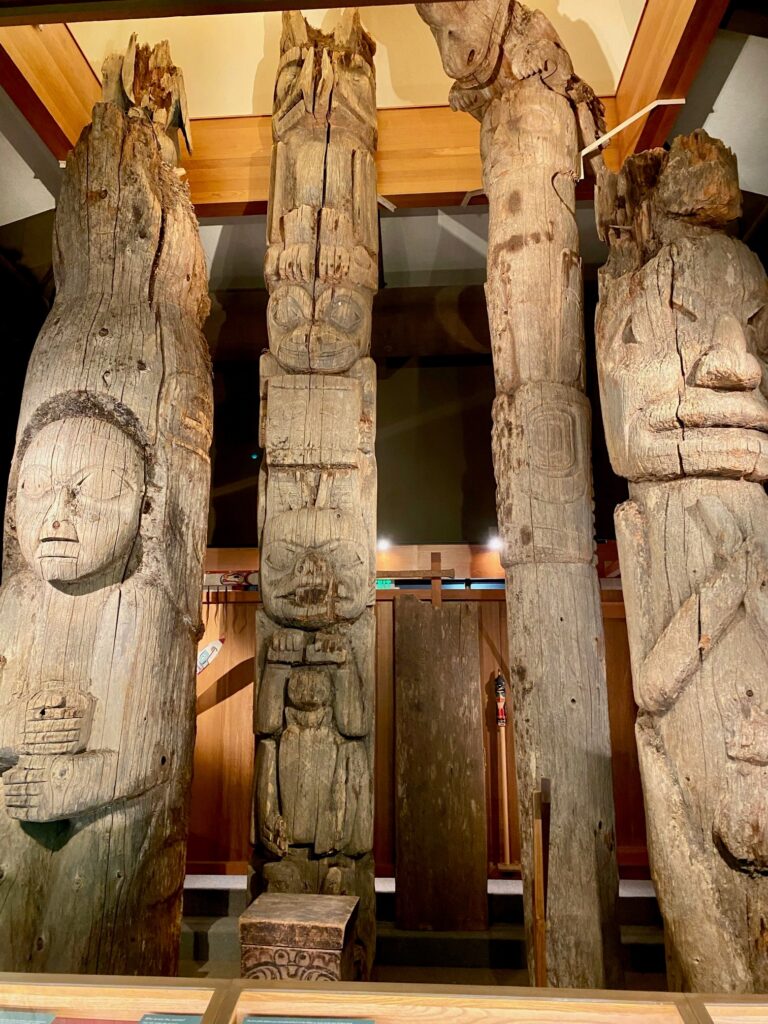The Totem Heritage Center in Ketchikan Alaska has a magnificent collection of 19th century totem poles brought from the Tlingit villages on Tongass Island and Village Island and from the Haida village of Old Kassan on Prince of Wales.
The Native elders provided much critical historical and cultural information about the totem poles. When you enter the Totem Heritage Center the energy of the artifacts grasps one. So much history, pain, and culture loss throughout the years.
Totem poles were carved to honor important individuals, commemorate momentous events and the social standing of their owners. They are not religious objects and have never been worshipped.
The totem poles are references to the rich culture of the Northwest Coast Native peoples. The figures carved on the totem poles animals, mythological beings, or natural features that symbolize a clan’s history and origins. The poles meaning can only be understood if ones knows the occasion and purpose for which it was created. The information was introduced when the pole was raised during a potlatch celebration then passed orally from generation to generation.
Even though the Totem Heritage Center is a small museum the amount of information relating to the totem poles allowed me to learn about the artistic traditions of the Tlingit, Haida and Tsimshian people. There is a poignant video towards the end of center that explains that the younger generations are trying to learn the language and adhere to the oral lesson and cultures of their elders so that the traditions will last when they are gone.
Listening to the elders speak in the video made one feel their sorrow that in so many instances their traditions were taken from them such as not being allowed to speak their native language and forced assimilation. Hopefully the museum will provide cultural understanding.
